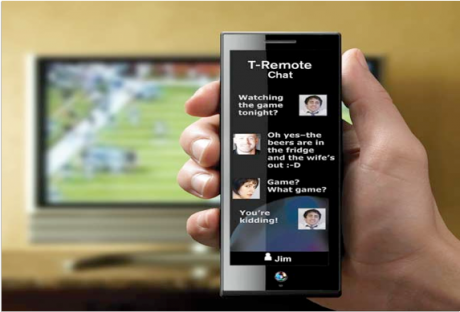According to Nielsen, more than 39% of Americans use their smartphone while watching TV at least once each day, and 62% do so multiple times each week.
Are advertisers ready to capitalize on the revenue potential that dual screen will bring?
For marketers, dual-screen advertising opens the door to creative that is more intriguing for viewers, as well as more effective in driving specific types of conversions. For example:
- A national auto ad runs on the TV screen while the handheld device simultaneously shows a geo-targeted companion ad with local dealer information and a build-your-own-car app.
- A TV ad for the latest blockbuster franchise movie presents an interactive quiz on earlier films in the series. Viewers use their tablets to respond, viewing crowd-based results in real time.
- Instantaneous cohort-based surveys delivered through the handheld gauge the effectiveness of a consumer packaged goods brand’s TV ad, rewarding participants with special offers.
For publishers and broadcasters, experiences like these add freshness and interactivity to their properties. They can boost TV ratings and ad revenue, as viewers that might have defected to online and mobile video return to take advantage of the new dual-screen experiences.
The greatest technical challenge will be the definition of standards. Industry leaders are already working on standards for broader compatibility across platforms, so expect dual screen apps to become more popular over the next 12 to 24 months.
Another key element is the ability to sync content between the TV and handheld. One approach is through audio fingerprinting: the microphone on the handheld listens to the TV to identify the content and its timing.
This can work, but doesn’t serve as a long-term solution. A more robust model will deliver information to a handheld app about the TV content available, use viewer data and input from the handheld to drive targeting and content selection, and serve the corresponding video and other content back to the TV seamlessly.
Advertising technology, digital video and rich media ad creative, and IAB ad standards continue to be based entirely on a single-screen metaphor. As programmers and multiservice operators look to monetize the full real-estate inventory afforded by dual-screen viewing, a new standard is necessary to help accelerate adoption of new formats. While experimentation has a valuable role to play, it’s incumbent on groups like the IAB to see that standards do emerge to prevent ongoing splintering of formats, sizes, and server technologies.
For dual-screen advertising to pay off, it needs to reach a critical mass of consumers, which will be challenging early on. Until dual-screen experiences become the norm, we’ll be dependent on a small but growing number of innovators to go first, do the work to deliver these experiences, and prove their effectiveness and ROI to the industry.
The dual-screen future is an exciting prospect, but be ready for the opportunities it presents. Think about what it’ll mean for your business in terms of content, process, and technology. More interactive and engaging ads will drive better results for the brand and publisher alike.-MediaPost
No time? No resources? Not sure where to start?
Call Jeff at 888-712-8211 today!
VMakers - Video simplified.
Trusted by Disney, Warner Bros, NBC, Paramount, CBS and ABC.info@VMakers.com


No comments:
Post a Comment